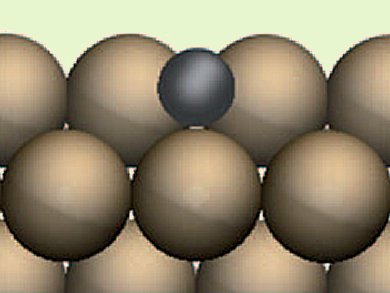Carbon black is cheap, easy to synthesize, and easy to modify which makes it particularly useful as a support for heterogeneous catalysis. The ability to alter the structural order (or graphitic character) of carbon supports might offer new possibilities for the rational design of heterogeneous catalysts.
Timo Jacob, Universität of Ulm, Germany, Dang Sheng Su, Chinese Academy of Science, and colleagues have synthesized supports with identical morphologies but different graphitic character. They showed that carbon incorporation into nickel nanoparticles led to a modification of the catalytic activity of the nickel atoms. Dissolved carbon was seen to control the initial stages of nanocarbon growth and led to a reconstruction of the nanoparticles.
Carbon incorporation might explain differences observed, for example, for ammonia decomposition on Ru/C or hydrogenation reactions with Pd/C.
- Dissolved Carbon Controls the Initial Stages of Nanocarbon Growth
A. Rinaldi, J.-P. Tessonnier, M. E. Schuster, R. Blume, F. Girgsdies et al.,
Angew. Chem. Int. Ed. 2011.
DOI: 10.1002/anie.201006639




